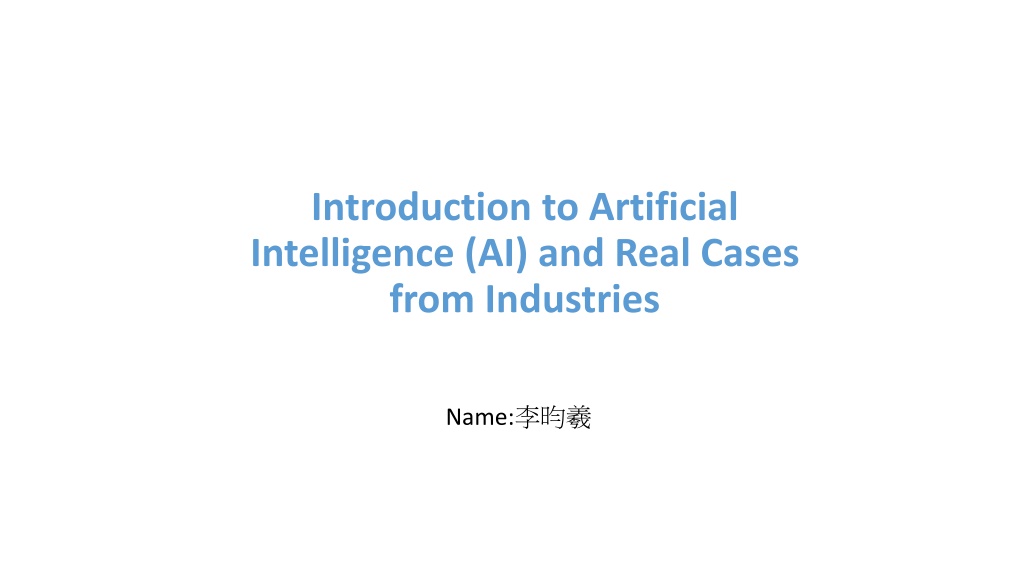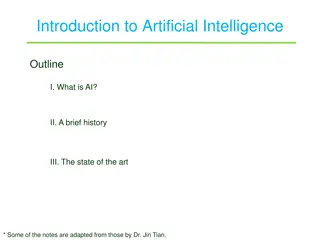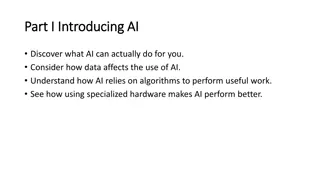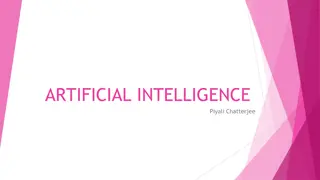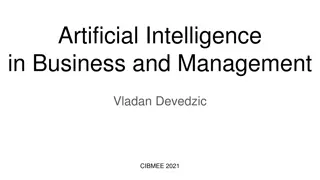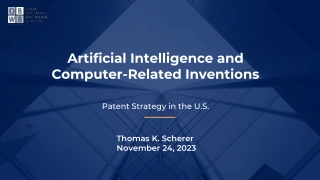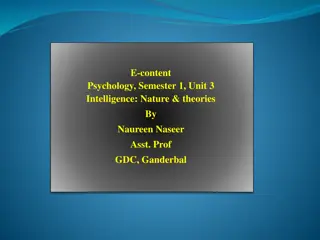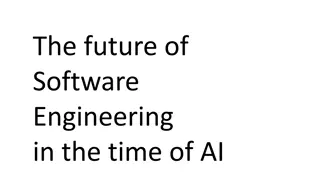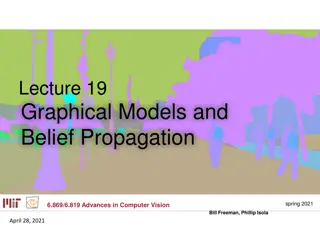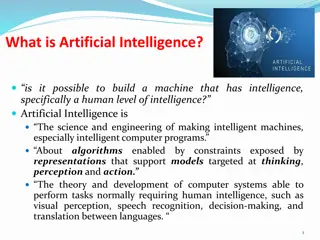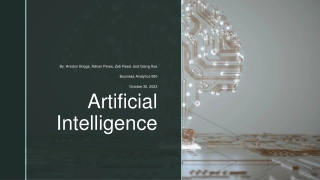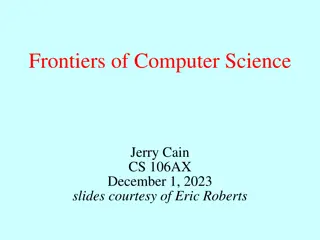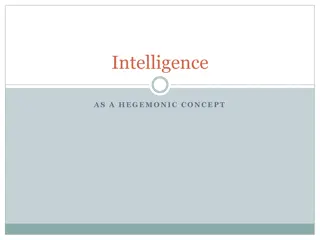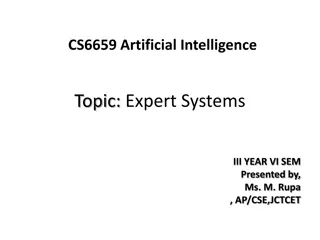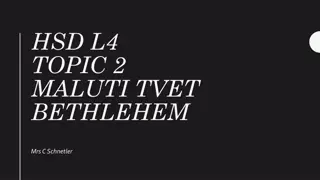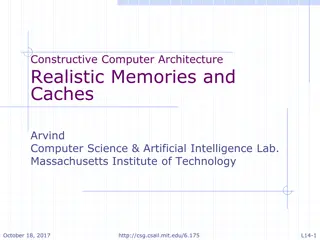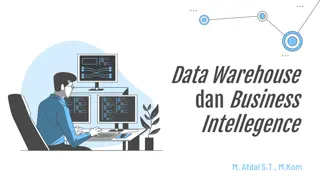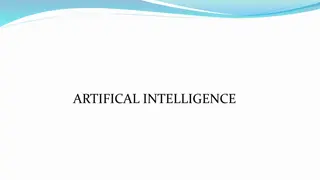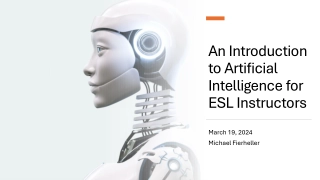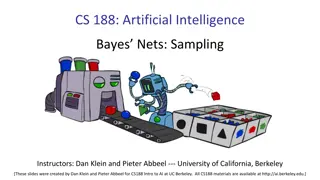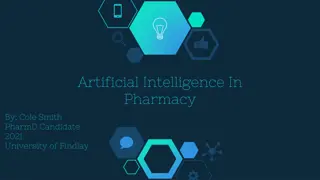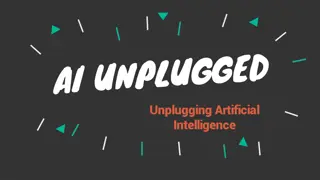Exploring Artificial Intelligence and Computer Vision in Industries
Delve into the world of Artificial Intelligence (AI) with real industry cases. Learn about Natural Language Processing (NLP) and Computer Vision through examples and practical exercises. Understand NLP's use of probability statistics, intent, utterance, entity, and session elements. Discover how Computer Vision uses AI for trend-based predictions and image identification techniques like pooling and convolution.
Download Presentation

Please find below an Image/Link to download the presentation.
The content on the website is provided AS IS for your information and personal use only. It may not be sold, licensed, or shared on other websites without obtaining consent from the author. Download presentation by click this link. If you encounter any issues during the download, it is possible that the publisher has removed the file from their server.
E N D
Presentation Transcript
Introduction to Artificial Intelligence (AI) and Real Cases from Industries Name:
NLP(12/14) (12/14)
My notes of NLP Base probability statistics Purpose enable computers to understand human s language Usage figure out the intent of the users and give response Elements that NLP relies on 1. Intent 2. Utterance 3. Entity 4. Session
Screenshots of the hand-on practice Ex.1 Google Trans.
Screenshots of the hand-on practice Ex.2 Simplify / Visuailize the Keyword
Screenshots of the hand-on practice Ex.3 Sentimental Analysis
Screenshots of the hand-on practice Ex.4 Python Word Cloud
Screenshots of the hand-on practice Ex.5 Multiple Language Sentimental Analysis
My notes of computer vision Base AI makes predictions based on the founded trend of data How AI identify a 2D picture? 1. Divide into blocks, and set grey value for each 2. Use the linear-relationship to solve the identification Improve the accuracy reduce the scale (CNN) 1. Pooling (Quantity) combine the data clusters into one single cluster 2. Convolution (Quality) extract targeted features and filter out unnecessary noise
Screenshots of the hand-on practice Number Prediction
Screenshots of the hand-on practice Pooling
Screenshots of the hand-on practice Convolution
